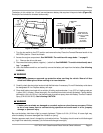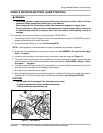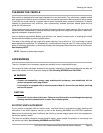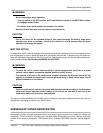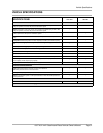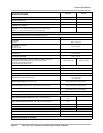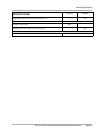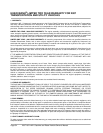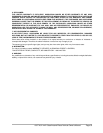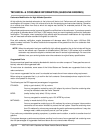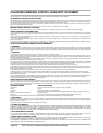
2007 HUV 4421 Gasoline and Diesel Vehicle Owner’s Manual Page 57
Emission Control System Information
Source of Emissions
The combustion process produces carbon monoxide, oxides of nitrogen, and hydrocarbons. Control of hydro-
carbons and oxides of nitrogen is very important because, under certain conditions, they react to form photo-
chemical smog when subjected to sunlight. Carbon monoxide does not react in the same way, but it is toxic.
Honda utilizes lean carburetor settings and other systems to reduce the emissions of carbon monoxide,
oxides of nitrogen and hydrocarbons.
The U.S. and California Clean Air Acts
EPA and California regulations required all manufacturers to furnish written instructions describing the oper-
ation and maintenance of emission control systems.
The following instructions and procedures must be followed in order to keep the emissions from your Honda
engine within the emissions standards.
Tampering and Altering
Tampering with or altering the emission control system may increase emissions beyond the legal limit. Among
those acts that constitute tampering are:
• Removal or alteration of any part of the intake, fuel or exhaust systems.
• Altering or defeating the governor linkage or speed-adjusting mechanism to cause the engine to oper-
ate outside its design parameters.
Problems That May Affect Emissions
If you are aware of any of the following symptoms, have your engine inspected and repaired by your servicing
dealer.
• Hard starting or stalling after starting.
• Rough idle.
• Misfiring or backfiring under load.
• After burning (backfiring).
• Black exhaust smoke or high fuel consumption.
Replacement Parts
The emission control systems on your Honda engine were designed, built, and certified to conform with EPA
and California emission regulations. We recommend replacement parts be purchased from Husqvarna, Inc..
These original-design replacement parts are manufactured to the same standards as the original parts, so
you can be confident of their performance. The use of replacement parts that are not of the original design and
quality may impair the effectiveness or your emission control system.
A manufacturer of an aftermarket part assumes the responsibility that the part will not adversely affect emis-
sion performance. The manufacturer or rebuilder of the part must certify that use of the part will not result in
a failure of the engine to comply with emission regulations.
Maintenance
Follow the Periodic Service Schedule in the owner’s manual. Remember that this schedule is based on the
assumption that your vehicle will be used for its designed purpose. Sustained high-load or high-temperature
operation, or use in unusually wet or dusty conditions, will require more frequent service.



